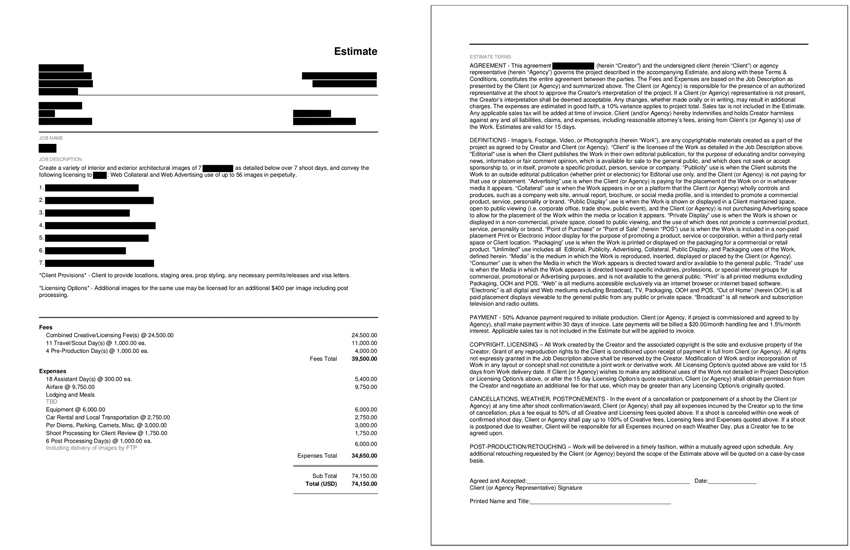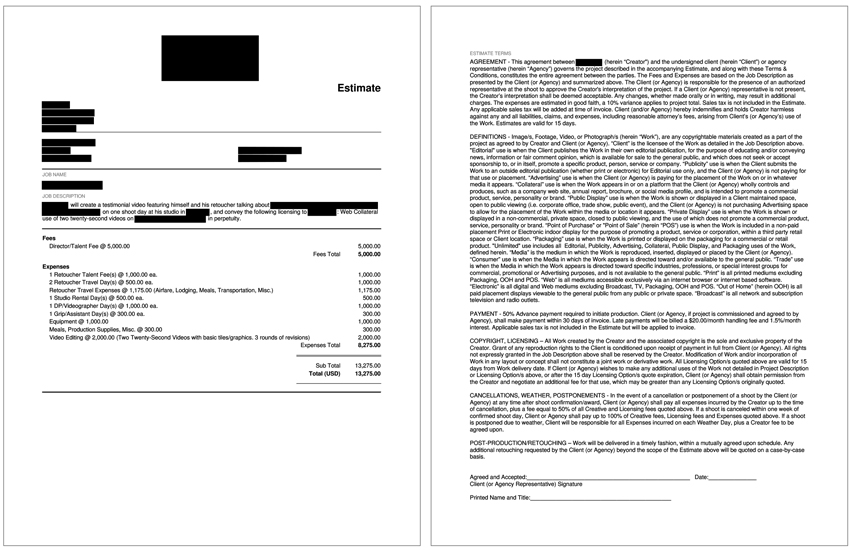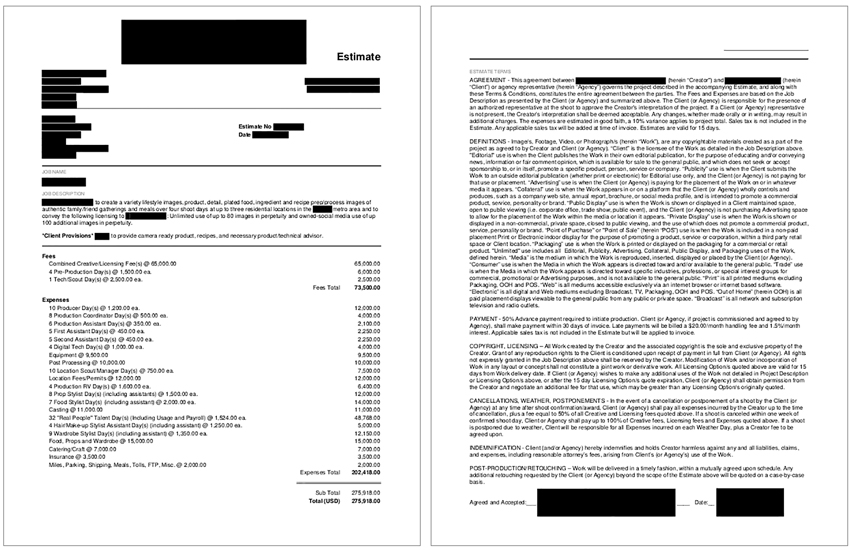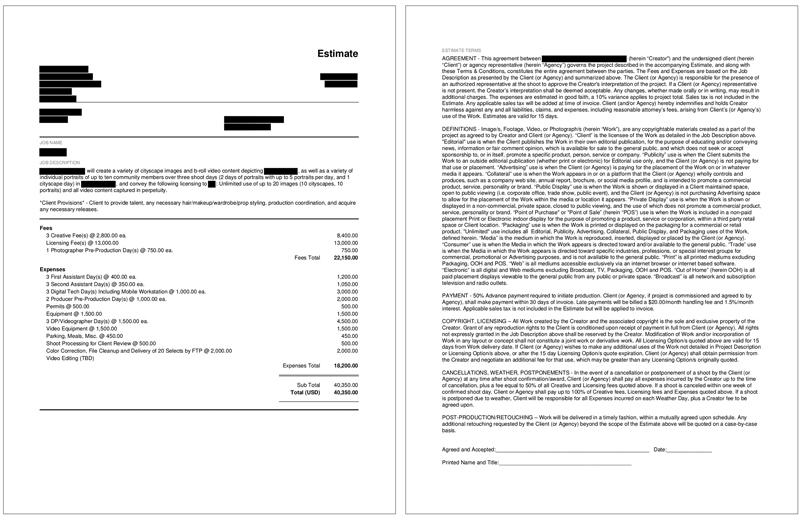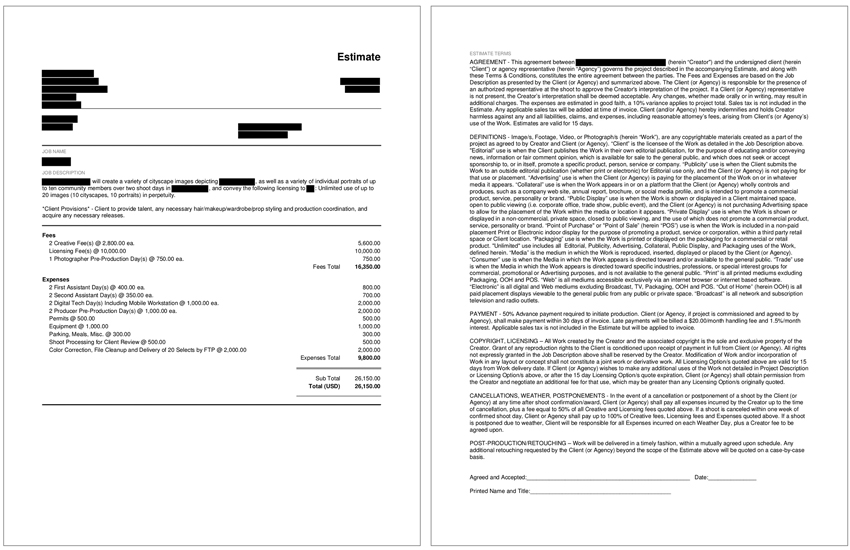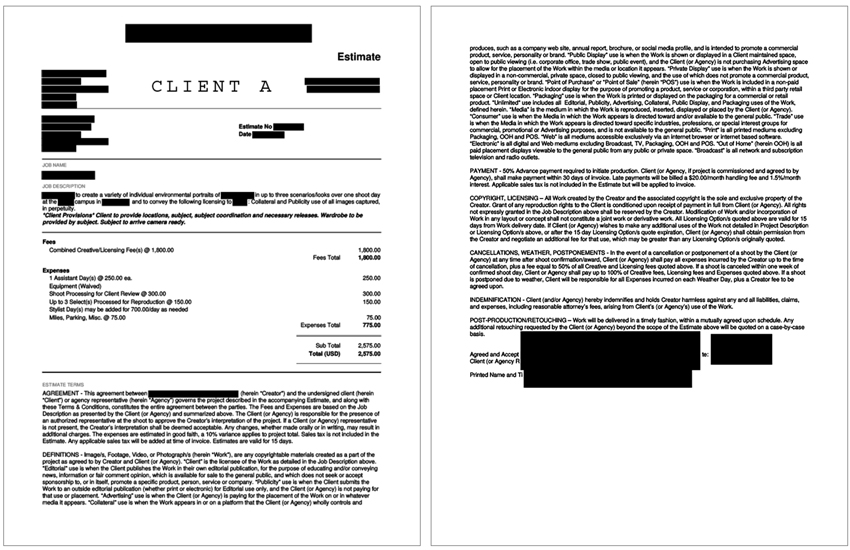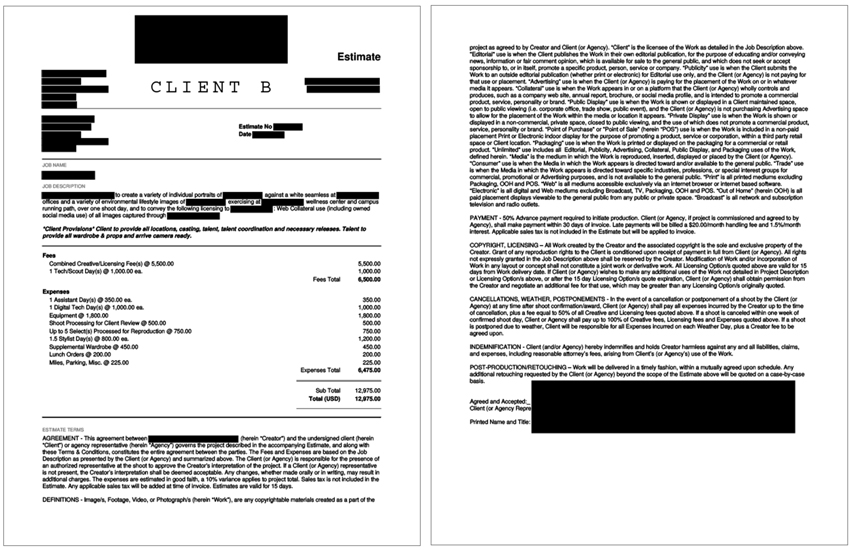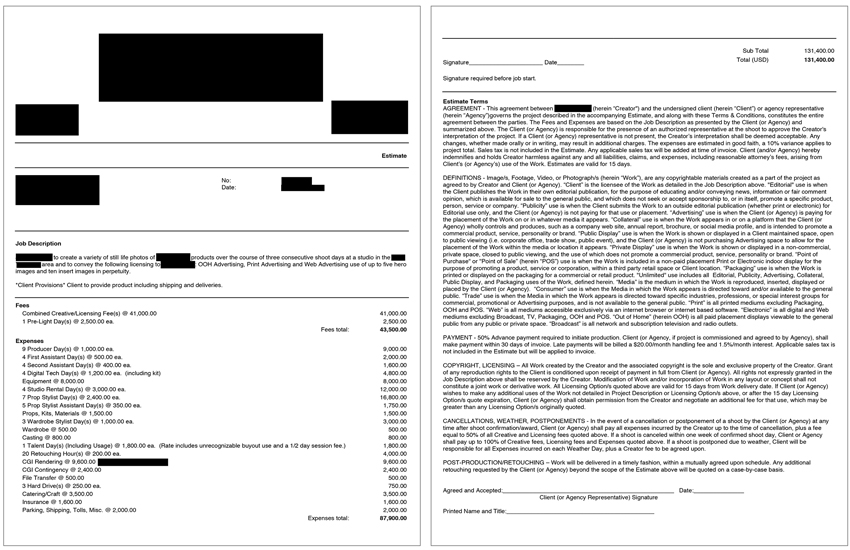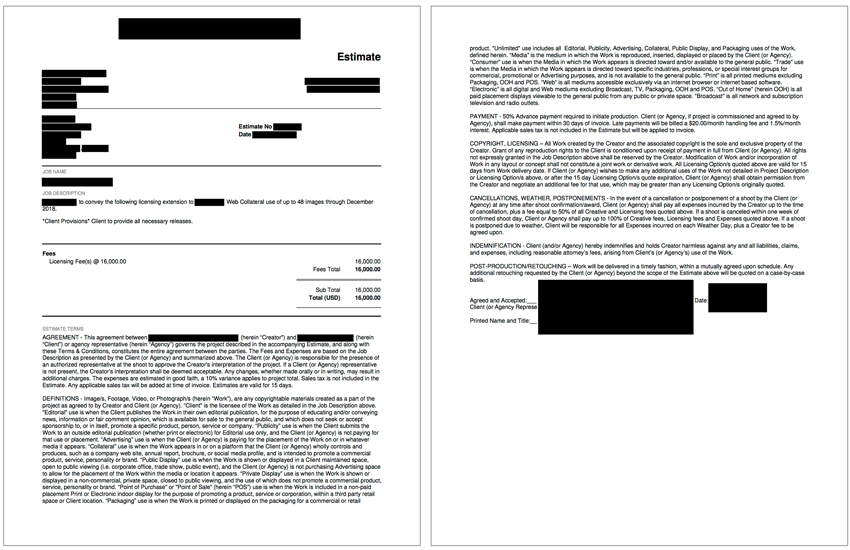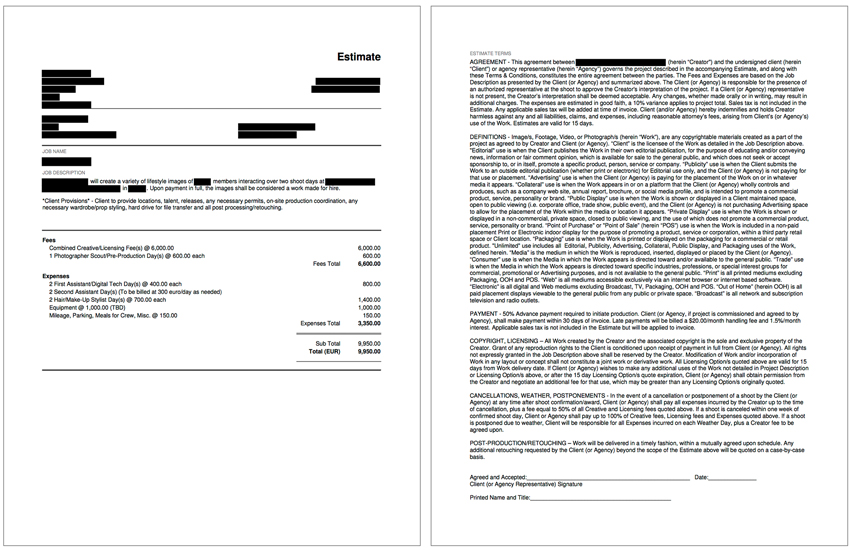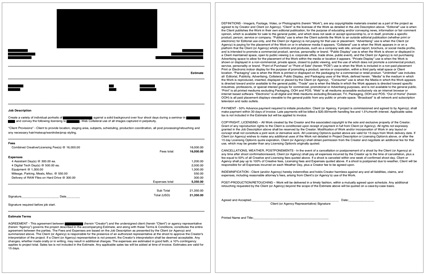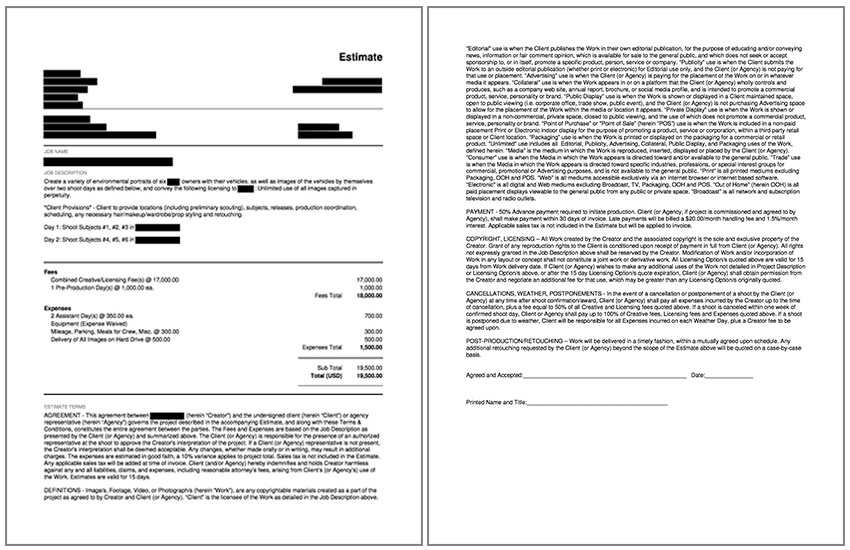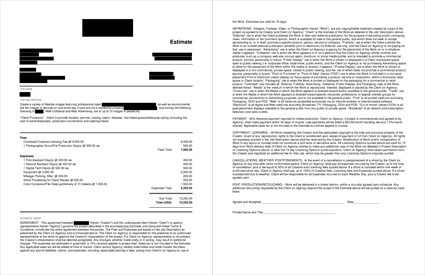Craig Oppenheimer, Wonderful Machine
Concept: Environmental portraits of employees in six cities
Licensing: Unlimited regional use of up to nine images for one year from first use.
Photographer: Portraiture specialist
Agency: Medium in size, based in the South
Client: Technology company
Here is the estimate:
Creative/Licensing Fees: The goal was to capture environmental portraits of nine employees in front of various landmarks within six different cities. Three of the cities would focus on just one employee, and the photographer would capture two employees in each of the other three cities. All of the locations were within driving distance of one another. Upward pressure was placed on the fee due to the unlimited use requested; however, we were able to limit the licensing to regional placement for just one year. The geographic reach was even more limited, with each image being advertised only within the city where the photo shoot took place. Considering this, I priced the first six images at $2,000 each, and the three photos of employees in the same location at $1,000 each. I then added $1,250/day as a creative fee for each of the six shoot days, which brought me to $22,500. It conveniently broke down to $2,500/image. I often increase the creative fee closer to $2,500-$5,000/day, but the nature of the project and my inclination to a tight budget made me err on the side of caution.
Pre-Production: I included five pre-pro days for the photographer to line up the project or for a producer to help with pre-pro work. It included three days to work with scouts in each location and two additional days to line up crew and make travel arrangements.
Assistants: I anticipated that the photographer would bring a first assistant (who would double as a tech) and a second assistant for the entirety of the trip/shoot.
Hair/Makeup Stylist: While the talent would be asked to arrive camera ready, we included a stylist for each of the six shoot days to help with touchups and manage light wardrobe adjustments as well.
Equipment: I included $500/day for a basic grip/lighting package that the photographer would bring, rather than renting.
Mileage, Parking, Misc: I included $100/day in mileage and $50/day in miscellaneous expenses for each day, then rounded down a bit.
Meals for Crew, Per Diems: This included $50/day for the photographer, first assistant, and second assistant — covering each of their travel/shoot days. I added $30/day for lunch to cover the hair/makeup stylist. We anticipated half-day shoots at most, which is why we didn’t initially include catering.
Lodging: I anticipated $250/night for two rooms, for six nights.
Location Scouting, Location Expenses, Permits: I included two and a half days per city for each of six cities. It was a challenge to estimate, and I initially anticipated at least three different scouts would be involved — each of which could cover multiple locations, but we could have potentially needed a scout in each of the six cities depending on availabilities and the demands of the areas. They would have to make recommendations from their files, scout the location in person, pull permits, negotiate location fees if necessary, and potentially be on-set if needed. I felt 15 days total would cover the task collectively. I included $250 per city for miscellaneous expenses like mileage and meals that the scouts would likely incur. I included $500/city for permits and marked additional location fees as TBD because we wouldn’t know of any additional costs until specific locations were dialed in. Some public spaces might only require a permit, but other “recognizable” landmarks may need a location fee or a necessary payment to acquire a release. Other locations might not demand any permit depending on the local film office guidelines but could require a space for staging. I felt that the expenses we included were a good start based on the initial project description; however, we anticipated that we’d have to re-address this as the scope of the project solidified.
First Edit for Client Review: I included $1,000 to account for the photographers time to go through the assets each day and compile web galleries for the agency to review.
Color Correction, File Cleanup, and Delivery: I included $100/image for basic post-production.
Results: The photographer was awarded the project.
Hindsight: Initially, we discussed a relatively lean production level with the art buyer, assuming each day would likely be a half day and the client/agency contacts on site would be minimal. We ultimately received a lengthy list of attendees, and it became clear that they needed a higher level of production on-site. The photographer, therefore, brought on production assistants in each city to be dedicated to client services.
If you have any questions, or if you need help estimating or producing a project, please give us a call at 610 260 0200 or reach out. We’re available to help with any pricing and negotiating needs—from small stock sales to large ad campaigns.







